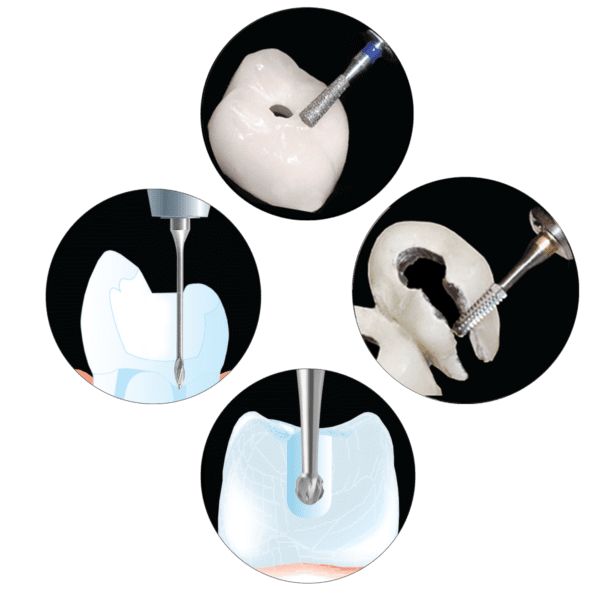
Bringing Tomorrow’s Innovations to You Today
For the most innovative and highest-quality dental instruments choose Strauss Diamond, where innovation, quality, and education are our priorities. Our dental instruments are in use

“Endo” comes from the Greek word for “inside” & “odont” from the word for “tooth”. This means that Endodontic procedures are performed inside the tooth.
The tooth can be broken down into three main parts in relation to root canals: enamel, dentin, & pulp. The enamel is the hard white part that you see above the gums and provides a barrier of protection against bacteria and germs. The dentin is a hard layer underneath the enamel. Lastly, we have the pulp which is comprised of nerves, capillaries, and other soft tissues. When receiving a root canal this is what is being removed.
When a patient is in need of a root canal it is due to infected pulp. If left alone this can lead to disease, bone loss, and even death. Luckily the endodontic procedure known as a root canal has become a routine procedure with high success rates and a multitude of benefits.
While the tooth needs the support of the pulp found in the root canal during its growth it can survive without it when it is fully mature. This is due to the fact that after the tooth reaches maturity it receives sufficient support from the surrounding tissues.
Knowing this the procedure aims to remove the infected pulp while saving as much of the surrounding enamel and dentin. This is preferable to removing the tooth entirely as it maintains as much of a natural bite pattern and fit as possible.
The first step in this procedure is removing the enamel & dentin cap of the pulp cavity. In order to do this, the dental professional will remove the enamel with a dental bur, usually round or football-shaped carbide burs, as they are preferable for removing larger amounts of the tooth.
The second step is locating the canals of the cavity with endodontic explorers. Next removal of pulp is performed with conical tungsten carbide burs such as Strauss’s micro drills. In order to remove smaller pieces of pulp that may be difficult to remove with a bur, following it with irrigation is recommended. This assists by dissolving smaller pieces of pulp while killing any bacteria found in the cavity. This is especially important for accessory canals which can hide bacteria.
The third is the drying of the canal in preparation for the sealant. Once the cavity & canals are completely dry the sealant is added slowly to ensure that the main canal and accessory canals are filled completely. Any cavities in the canals could lead to infection so it is important to ensure proper sealing.
Optionally the tooth can be capped with a crown which is recommended as it provides further structural integrity for the tooth. This can also assist with ensuring that the tooth is functional, not just visibly correct.

For the most innovative and highest-quality dental instruments choose Strauss Diamond, where innovation, quality, and education are our priorities. Our dental instruments are in use

When running a dental practice it can be challenging to make your patients feel comfortable. After all, the fear of going to the dentist is
© 2021 StraussDiamond Return Policy Privacy Accessibility
